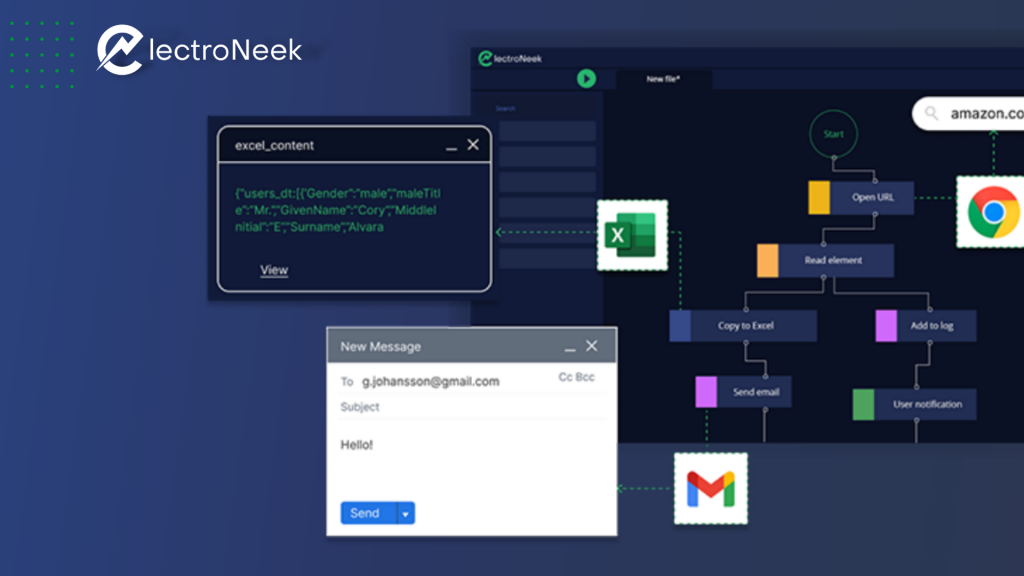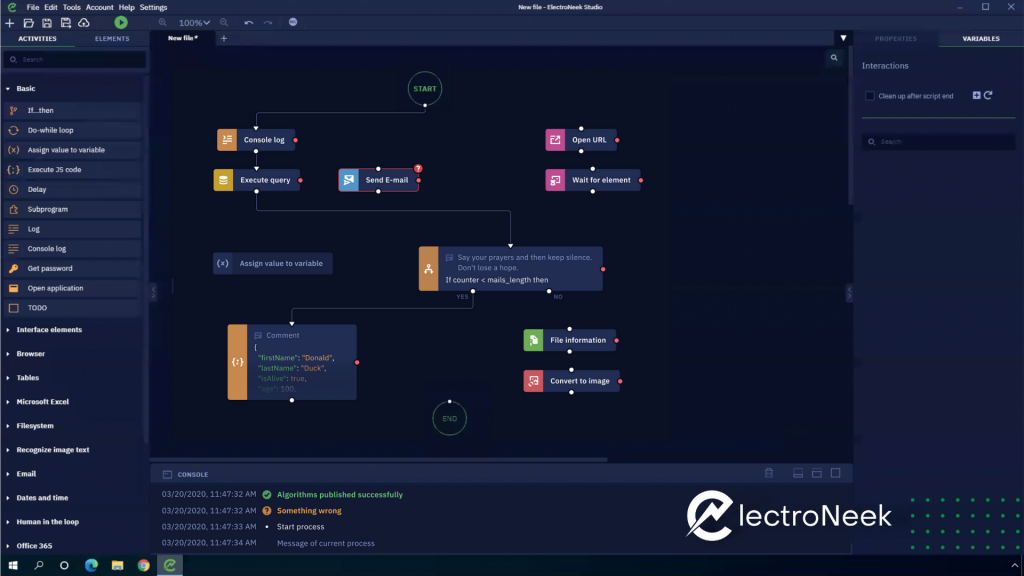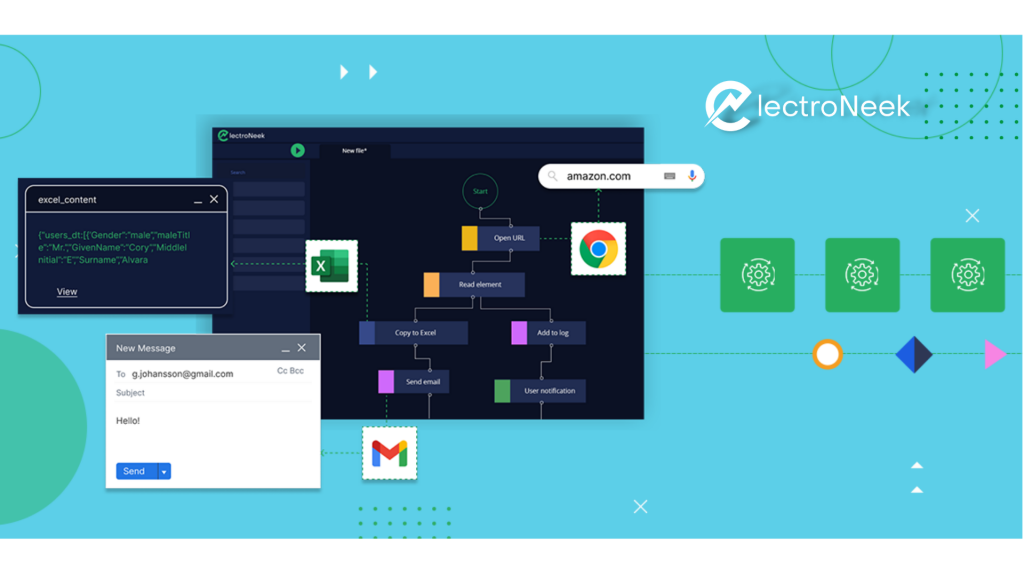
The responsibilities of robotic process automation (RPA) developers differ from company to company, but one facet of an RPA project always remains true: the development process is critical.
RPA developers face a host of responsibilities, and are often required to perform a number of tasks on a project-to-project (or even day-to-day) basis. These responsibilities can include:Developing process design.
- Designing, developing, and automating workflows.
- Creating process documentation.
- Quality assurance for automation.
- Deploying bots, RPA components, and development tools.
- Supporting RPA project implementation.
Below are ten tips and tricks RPA developers can utilize throughout their day-to-day responsibilities to improve their skills and ultimately make their lives easier.
Ten best practices for RPA developers
These best practices are platform-agnostic, meaning RPA developers can apply them regardless of the RPA platform/tool they are working on. These tips are intended to reduce the confusion or frustrations developers have during the development cycle.
Process designing scales the delivery of automation
Process designing in automation means keeping the specifications of an RPA project. A good design is significant for successful automation as it scales and accelerates the process. It also offers a clear and concise direction to RPA developers and helps them prioritize work to avoid wastefully building what is unnecessary.
A process design document (PDD) contains the necessary details about the process flow to be developed within robotic process automation along with the standard sequences of steps of the manual and automated (to-be) processes.
A clear, consistent, and detailed PDD functions as a platform that developers can use to create/design an automated solution in a consistent and organized manner. A PDD offers a holistic view (high-level visibility) of the process to be automated and serves as a basis for how a bot will handle this process. Beginning from there, an RPA developer will then go deeper into the details of each business process. As the PDD fits in the big picture of an RPA project implementation, your PDD must include precise details of all processes and components (you should meticulously define the process down to the keystroke level) for organized and consistent automation.
Take the help of a fictional friend to troubleshoot frustrating issues
RPA developers, especially newbies, face several problems during the development stage. If you have encountered one, try googling your issue. There are higher chances that other developers would have encountered it and have found a solution already. One helpful resource is Stack Overflow, where developers help each other with their experiences and solutions.
Modularity brings structure to development
Here, we refer to splitting complex business processes, including various tasks, each with different steps, into clearly defined modular components. Think about actual business processes that are complex and include multiple tasks, each with further steps.
We advise RPA developers not to jump straight into development without considering the tasks within a process. It is better to break the solution into modular components with clearly defined input and output parameters. So, if they make changes to one module, it will not impact other modules. Modularity will not only bring structure in the bots development stage, but it will also make your solution adaptive to change.

Test your code enough
Testing is among the key objectives of software development as it accelerates this process. RPA developers should prefer testing for a smooth life cycle, reduced processing time, easy adaptability, and enhanced product quality. Therefore, a test-driven development offers more confidence to RPA developers regarding their code quality. However, some newbie developers may not test their codes at all.
The real business scenarios are much more complicated than the theory. A single process can have many variants, so developers need a robust test plan with several test cases. They can also test the components independently to check if they are performing as intended. It will also help developers discover errors and fix them before the software bots go into production.
Testing helps RPA developers ensure that the bot is working as it should. Therefore, they should test their codes as frequently as possible.
Set realistic time estimates
We won’t give you a complex formula to calculate the time that you will take to build a feature.
We do agree that too much time may cause procrastination and unnecessary budget spending, whereas a short timeline will put pressure on the developer and may impact the quality of the code. Seems complicated right? Experienced developers can take help from past experience, but for new developers, we have some tips:
- Break down your task into smaller ones and try to figure out the time it will take to complete them.
- Get a better understanding of all requirements and ensure you are not missing vital information. You will have an idea how much time it will take to finish the task.
- Have confidence in your abilities; if you have worked on a similar project before, it can help you in making accurate estimation.
- Try to set a highest limit for a single task.
- Include team interactions/meetings, testing, initial deployment, amendments, bug fixing and other factors in your estimate.
Avoid hard coding external settings (when necessary)
Hard coding, embedding configuration data directly into the source code, is a software development process that may convey inflexibility within software design and implementation. The process owners should be able to modify automation values/variables without developer assistance. Instead, RPA developers should look to avoid duplicated knowledge in their systems. Ideally, there should be a single place (code/configuration) for changes if you have to make alterations, such as for an error message.
Put yourself in the other person’s shoes and how much time it would take to modify the logic if changes were needed. That’s why RPA developers should avoid hard coding and allow process owners to make modifications easily by putting the settings inside a configurable file.
Follow the DRY principle
Implied from the above best practice is the basic rule RPA developers must keep in mind– to avoid repetitive tasks or try to minimize it. DRY or Don’t repeat yourself is a fundamental principle to prevent redundancy of your automated workflows.
RPA developers should avoid duplicating knowledge, keep their code clean and efficient so that you can update the templates and variables from a single place. The DRY principle eliminates repetitive tasks and matters a lot when developing codes and building models.
Consider an example:
You have created a bot to log in to the system and access reports from three user accounts. One way could be to use the same code and copy it across all three accounts. When the bot is deployed into production and a new developer (unfamiliar with the code) needs to make changes, it will be difficult and time-consuming for him.
To avoid such a situation, you can create a reusable subtask within the main task containing all lines of code. The developers would only need to call and edit only the subtask.
Make your RPA script easy to read
A smooth transition from one developer to another is significant for any automation project. As an RPA developer, you are not writing code for yourself only; we encourage ease of RPA development and deployment for other developers entering the environment. So focus more on code clarity.
To help other developers make your workflow easy to understand so others can interpret and follow it. It is also true for yourself; if you struggle to read your code, how will you debug your programs?

Create a library of reusable plugins
You can add reusable RPA plugins (connectors/integrators, process solutions, workflow, skill, component, activity, etc.) to a common library to accelerate development efforts and reduce implementation time and errors.
To reduce repetition, create these once and reuse them to take care of a particular task such as manipulating spreadsheets, sending emails, and shareable logins between automation.
RPA bot development is a time-consuming part of RPA implementation, and such libraries will significantly reduce the development time.
Build automation that communicates
When humans encounter any issue, they communicate with others to resolve it. The same can be applied to automation to make it easier to track the progress of a bot. It can be done via summary files, emails, audit logs that specify what a bot is doing and if it encounters any problem.
Well-managed audit logs also depict that a company has robust internal business controls and help track a potential security breach or information misuse.

Ready to start your career in RPA development?
The Robotic Process Automation technology is great because it is easy to use. With out-of-the-box features like drag-and-drop programming and desktop recording tool, becoming a bonafide RPA developer is not challenging. But if you are new to RPA programming, you may start to harbor some trepidations towards this field.
We understand that RPA development may not be a straightforward journey for many, which is why we present a list of ten tips that all RPA developers should know. We hope that these best practices offer actionable insights that you can directly apply to your work.
If you want to start your career in RPA development, you should select an RPA platform like ElectroNeek that can help you polish your skills. ElectroNeek offers in-depth training programs and certifications through its academy to teach you everything about Robotic Process Automation.